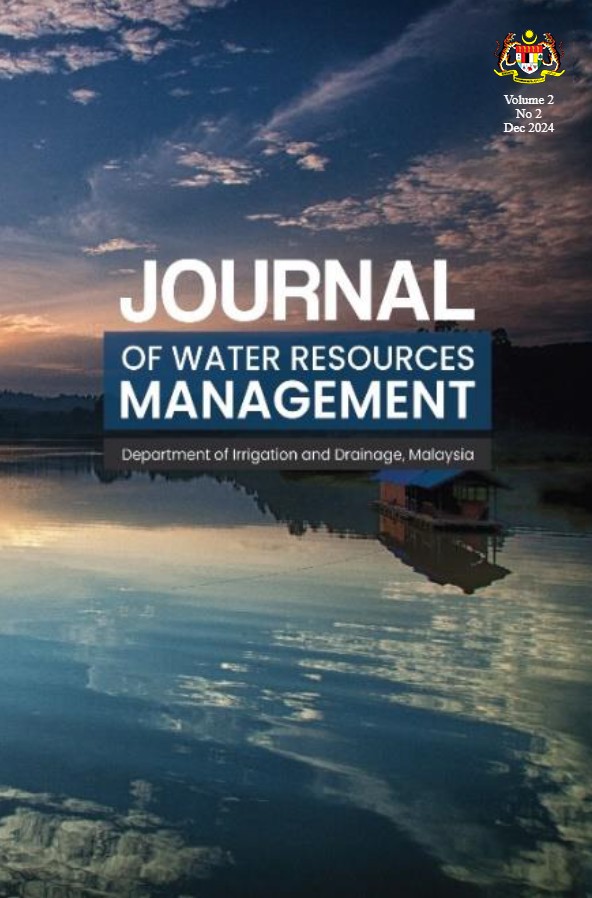The Flood Risk Analysis Due to High Astronomical Tides and Tidal Effect in Low-Lying Areas Township : Flood Risk Analysis
Published 13-01-2025
Keywords
- Flood risk, High Astronomical Tide, Sea Level, MIKE21, Global Mapper
How to Cite
Copyright (c) 2025 Journal of Water Resources Management

This work is licensed under a Creative Commons Attribution-NonCommercial-ShareAlike 4.0 International License.
Abstract
Low-lying coastal areas in Malaysia are exposed to rising sea levels influenced by topographical, climatological, oceanic currents, and weather factors. The increase in sea levels due to the highest astronomical tide and tidal fluctuations poses a flood risk to these low-lying urban coastal areas. However, the limited flood records resulting from the highest astronomical tide hinder reliable statistical predictions. Therefore, numerical analysis is necessary to simulate and forecast flood vulnerability in these non-tidal, low lying urban areas. This study aims to assess the flood vulnerability caused by the highest astronomical tide and rising sea levels by integrating numerical hydrodynamic modeling and flood vulnerability analysis. The MIKE21 numerical model is developed to simulate the highest astronomical tide with rising sea levels by integrating hydrodynamic processes, and the Global Mapper software is used for flood mapping. The model is calibrated and validated against the Highest Astronomical Tide (HAT) and Lowest Astronomical Tide (LAT). The validated model is then used to simulate for four different Return Period scenarios - 10 years, 20 years, 50 years, and 100 years. The maximum value of the increase is 86% for flood depth and 83% for flood area. The resulting flood inundation map shows the location of the flood risk according to the return period count and the highest high tide impact.

